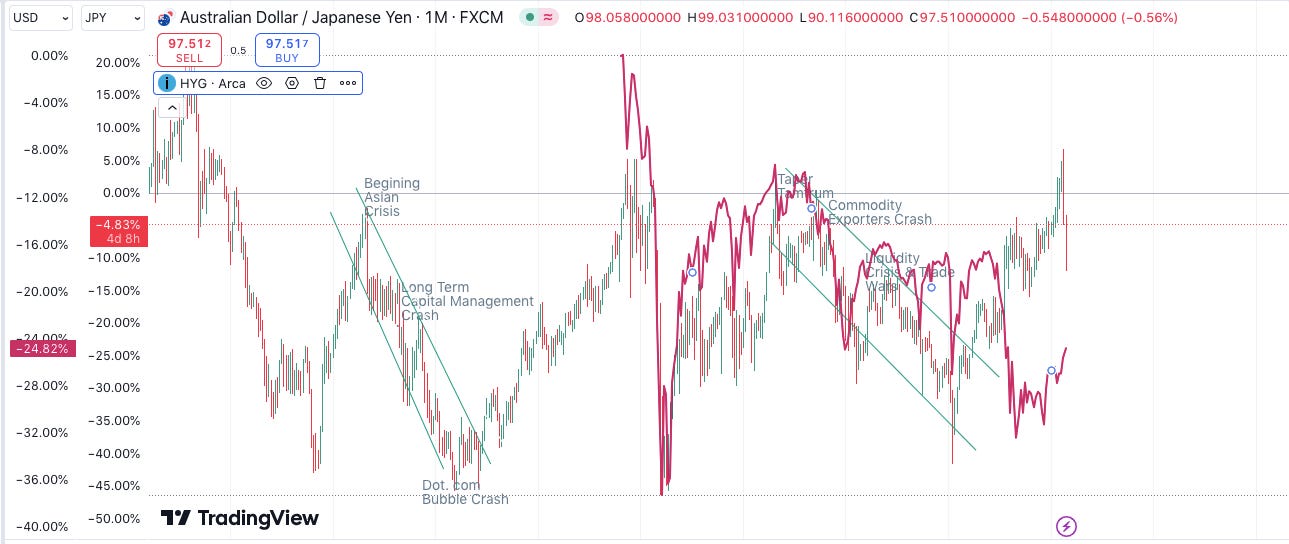Mr. Market: The Great Collective Intelligence
Liquidity, much like dopamine in the human mind, focuses our attention on the short term, diverting us from our highest potential as human beings: the ability to create.
In my previous post, I explored the quantum nature of the mind. Just like the mind, the market can be seen as a vast network of interactions, where billions of minds buy and sell, functioning like synapses in a global brain. Large entities such as BlackRock, Vanguard, and sovereign wealth funds act as neural hubs, responding to varying potentials of liquidity flows and the creativity of our collective mind.
The market, much like the mind, experiences different states of resonance, all influenced by the economic cycle. Instead of an ECG to measure brain waves, we can observe the price of copper relative to gold to understand the pulse of this cycle. When there is optimism and expectations of growth, copper rises, and gold falls; when there is pessimism, gold rises, and copper falls. This indicator is perhaps the most connected to the real economy, though it is not the only force driving the market.
Copper/Gold (XAUC/XAU) Vs High Yield/ Treasuries (HYG/TLT)
Bond traders, for example, are tuned into a different reality. In their cognitive framework, when they anticipate economic growth, high-yield bonds become the preferred assets; conversely, when they foresee a recession, treasury bonds take the lead. This divergence in perception between metal traders and bond traders raises a fundamental question: Who is right? What underlies this disparity, and what might cause it to persist?
Liquidity, much like dopamine in the human mind, focuses our attention on the short term, diverting us from our highest potential as human beings: the ability to create. Just as dopamine creates reinforcing cycles in our minds, providing fleeting pleasure and feeding the ego, in markets, it is liquidity that can generate misallocations of capital and bubbles. To measure the market’s “dopamine,” it’s not enough to observe the Fed’s policies; we must also consider the carry trade, which reflects how liquidity flows through the financial system.
Currently, the Japanese Yen, with its near-zero interest rates, has created the most significant opportunity differential in the market, allowing money to flow from Japan into high-yielding and emerging market debt. This, in my opinion, is the reason behind the divergence between what bond traders and metal traders are pricing in. As long as the carry trade persists, there will always be an appetite for high-yield bonds. But when the carry trade weakens, it will be the metal traders who reveal the truth: prolonged high rates, elevated transportation and input costs that are deteriorating the balance sheets of many zombie companies.
AUDJPY Vs HYG (High Yield ETF )
A chart that I find to be an excellent proxy for the carry trade is the Australian Dollar versus the Japanese Yen (AUD/JPY). When there are growth expectations, liquidity flows toward currencies like the Australian Dollar, which represents an appetite for commodities. As these expectations weaken, the Yen strengthens, and the carry trade deteriorates. The unwinding of the carry trade has historically been a catalyst for significant debt default processes.
Just as our beliefs and versions of the ego collapse when confronted with reality. However, there exists a higher frequency beyond liquidity and debt: creativity and productivity.
When a part of our society resonates with creativity, bull markets are born. The 1920s saw the rise of jazz with Louis Armstrong and the Charleston; the 1950s, rock and roll with Elvis; the 1980s, pop with Michael Jackson and Madonna; and the 1990s, grunge with Kurt Cobain and pop with Britney Spears. Today, we are in a new bull market, marked by the phenomenal success of Taylor Swift. Each of these periods was also accompanied by significant technological disruptions: the 1920s with the birth of the automotive industry, electricity, and chemical industries; the 1950s with television, semiconductors, airlines, and nuclear energy; the 1980s with computing; the 1990s with the Internet; and since 2020, the birth of AI and the transformation of the production system.
It may seem surprising to link music stars with the financial market, but our civilization follows simple patterns. The first algorithm for economic growth is war and survival, where scarcity creates a zero-sum game filled with violence and guilt. The second is trade and trust, akin to intimate connection, where mutual faith creates new opportunities. Finally, the highest frequency is the creation of something new, a new model of production.
Technology, art, and music are expressions of this creative spirit. Mr. Market, in essence, is a collective intelligence that reflects these fundamental patterns.
If this resonates with you, feel free to share.
Thanks for reading,
Guillermo Valencia A
Cofounder of Macrowise
August 26th , 2024





